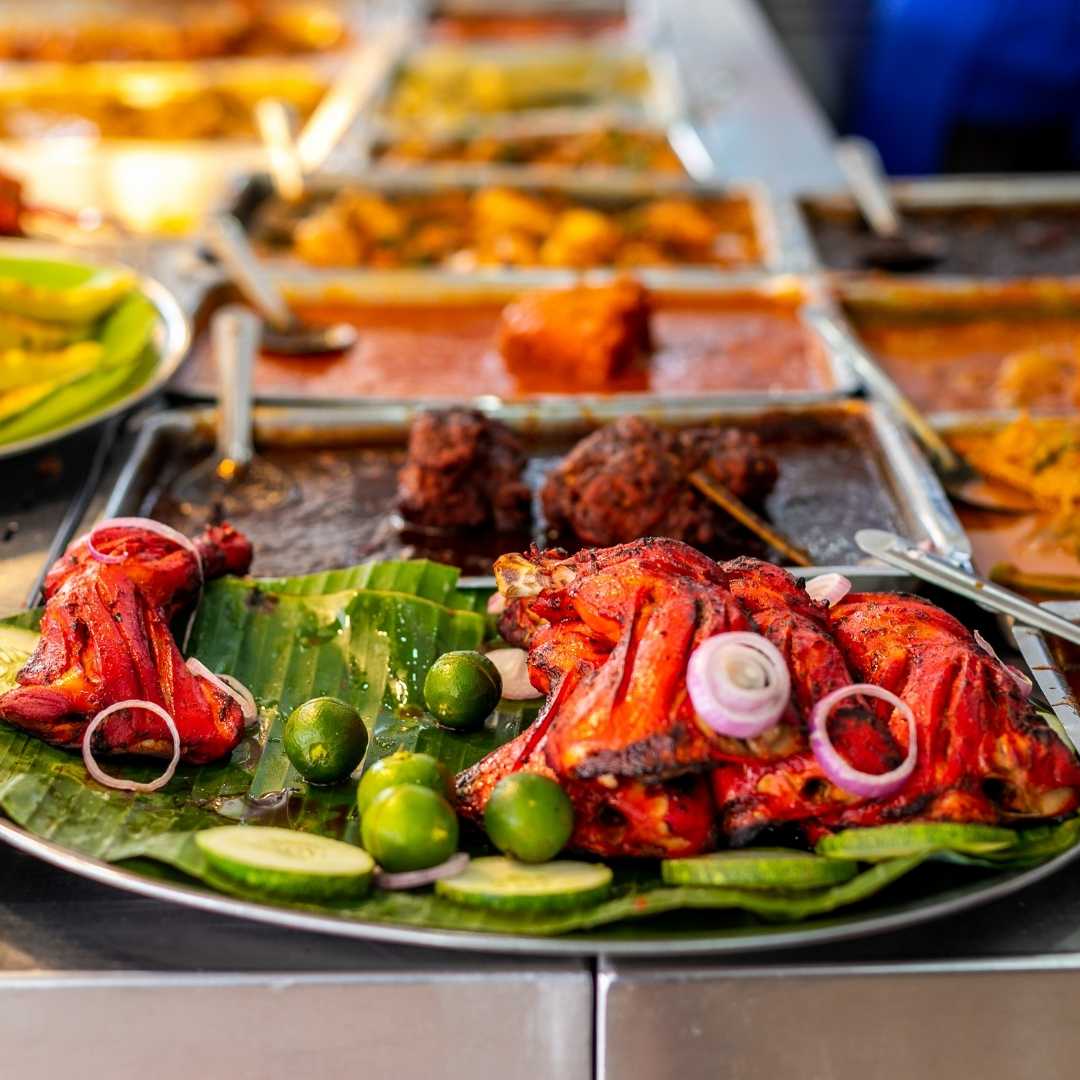
Food (Sanskrit— bhojana, “that which is to be enjoyed,” Hindi— khana, Tamil— shapad) offers a way to comprehend both the everyday culture of India and the subtle and overt complexities of identity and intercultural communication. Food is talked about frequently in India today, where the middle class is more affluent than ever and the economy is expanding as a result of economic liberalization. India, whose food economy was on the verge of famine in the 1960s, is now a nation where food seems to be in plenty, and the aesthetic possibilities are mind-boggling. Daytime ratings are dominated by cooking programs that showcase culinary skills on television, frequently featuring famous chefs or unheard-of local housewives who may have won a competition. Domestic and international tourism brochures focus on regional native specialties and cooking techniques. International cuisines are served at metropolitan restaurants, which are crowded with patrons. The popularity of local street cuisine and small cafés has never been higher, while packaged meals from India and other countries are selling quickly in supermarkets. However, lifestyle publications promote wholesome diets, locally sourced ingredients, sustainable and environmentally friendly alternatives, and healthy meals. Public conceptions of food, as well as culinary and gastronomic preferences and lifestyles, are profoundly indicative of India's awareness of its own cultures and its complicated historical and contemporary relationships with foreign cultures.
In general, there is no such thing as "Indian" food; rather, there are a huge variety of local, regional, caste-based ingredients and cooking techniques. Since India's independence in 1947, these many types of food and their preparation of them have been classified as "regional" and "local" cuisines, despite having been popular both domestically and internationally for the majority of India's history. Because of this diversity and the way it is celebrated, the majority of Indians are usually sophisticated consumers who eat seasonally, regionally, and, to a considerable part, sustainably. They also enjoy a wide variety of flavors and textures. Nevertheless, despite some resistance in recent years, the entry of multinational food corporations and Indian food giants' imitation of them, the industrialization of agriculture, the prevalence of standardized food crops, and the standardization of food and tastes in urban areas have all prompted a flattening of the food landscape.
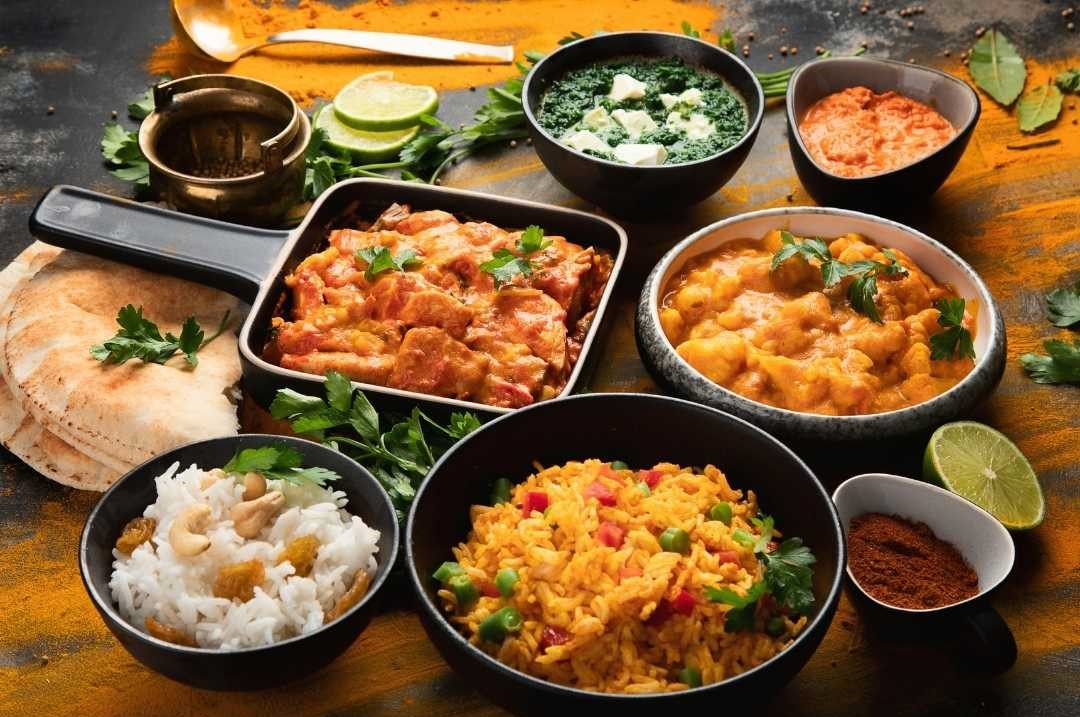
In the face of colonization beginning in the eleventh century, India strove to identify itself gastronomically. From the twelfth to the sixteenth centuries, Central Asian conquerors established various dynasties known as the Sultanates. From the sixteenth to the nineteenth century, the famous Mughal dynasty ruled. The British began trading as the East India Company, remained as the Crown until 1847, and then had their heyday as the British Raj from 1857 to 1947. The Mughals imported new dishes from Central Asia to the subcontinent, such as dried fruits, pilafs, leavened wheat bread, stuffed meat, chicken, and fruits. The Mughals also introduced new cooking techniques, such as baking bread and cooking meat on skewers in a clay oven, braising meats and poultry, tenderizing meats and game with yogurt protein, and producing native cheese. They cooked their delicacies using indigenous ingredients like spices (cardamom, pepper, and clove) and vegetables (eggplant from India and carrots from Afghanistan), producing a distinct Mughlai Haute courtly cuisine.
Contemporary India celebrates regional food and culinary methods. India's history, combined with its size, population, and lack of adequate transportation, has left it with a legacy of finely developed local delicacies and a connoisseur population trained in appreciation of difference, seasonality, methods of preparation, taste, regionality, climate, diversity, and history, albeit largely unconsciously until recently. Though many regional delicacies are well-known throughout the country, such as Gujarat's methi masala (fenugreek chutney) or Rajasthan's fine, gauze-like, sweet suther pheni (a confection resembling a bird's nest), regional delicacies such as Bengal River carp marinated in spicy ground mustard and cooked in strong-smelling mustard oil, can appear exotic and even strange to outsiders. Train travel in India is a culinary excursion, with stations carrying local specialties, requiring the traveler to "load up" on legendary specialties. Domestic food tourism fosters and preserves a lively culinary imagination and gastronomic landscape both within and outside of India.
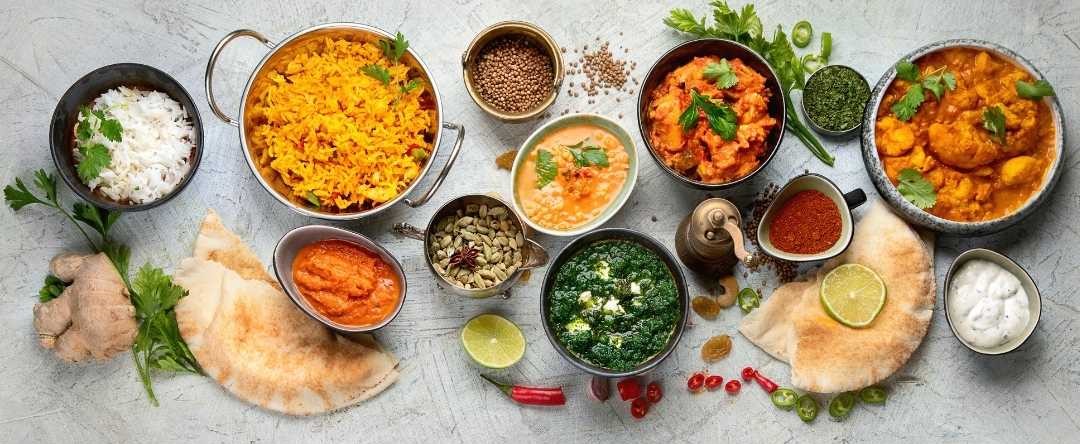
The Indian lunch is a complex and underappreciated phenomenon. "Typical" meals frequently feature a primary starch such as rice, sorghum, or wheat; dry roasted or shallow wok fried vegetable or meat curries; cured and dried vegetable dishes in sauces; and thick lentil soups with varying contents. Masalas (a dry or wet powder of finely ground spices and herbs), plain yogurt or vegetable raita (yogurt dip, also known as pachchadi in south India), salted pickles, fresh herbal and cooked chutneys, dried and fried wafers, and salted papadums (fried lentil crisps), and occasionally dessert (called "sweetmeats") are examples of condiments. Indian dinners can vary greatly across the subcontinent, and any of these components, in different combinations and with different ingredients, might form an Indian meal.
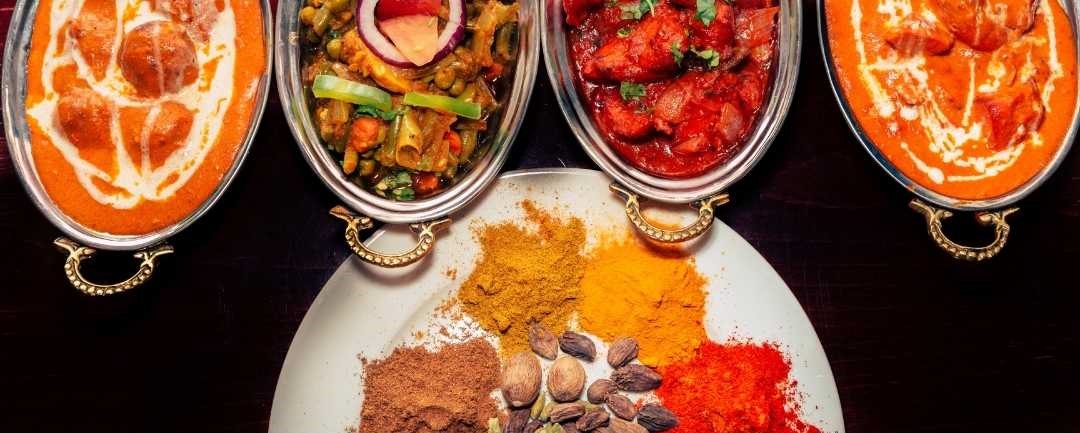
Despite the lack of a conventional diet, India has historically "imagined" its food in terms of incorporating and domesticating "foreign" influences. With India's rise as an economic superpower over the last two decades, a slew of multinational fast food corporations has penetrated the hitherto protected Indian culinary environment. Pizza Hut, McDonald's, KFC, Pepsi, and, most recently, Taco Bell are among them. To conquer the notoriously difficult-to-please Indian palate, these corporations have had to "Indianize" and self-domesticate. Today, urban fast food restaurants are popular in India, and they are changing the diet of the middle class.
Simultaneously, local food merchants have taken intricate regional recipes and simplified them for simplicity of industrial production, resulting in an Indian pack-aged food boom. The $182 billion Indian food sector is expected to increase at a 13 percent annual rate. Indian precooked packaged foods empires, such as MTR, SWAD, Haldirams, and Pataks, have gone global, making their products available wherever Indians currently live, ushering in a quiet but unnoticed shift in eating patterns. Previously, the emphasis was on rural, natural, fresh, and cooked on-site meals. The emphasis is now shifting to industrialized, processed food. These advancements are partially reengineering local and caste-based specialties for mass production, distribution, and consumption, challenging previously held beliefs about what is traditional or valuable.
Another manifestation of globalization is the habit of branding Indian food, which is mostly the product of curry establishments in the United Kingdom. Curry is a category that includes both dry and wet vegetable meals flavored with various masalas (spice and herb mixes), and it is claimed to receive its name from the use of the south Indian "curry leaf," a citrus leaf used as a flavoring agent. Outside of India, Indian food is reinterpreted as second-tier fare from north Indian establishments, a blend of Punjabi and Mughlai cuisine adapted to local tastes. In the United Kingdom, Indian restaurant menus are essentially the same, and the diversity of the country's food is severely underrepresented.
Amchur Restaurant & Bar is one of the popular Indian restaurants which provides not only Indian cuisines but also Nepalese and Oriental cuisines with a contemporary approach which are not only healthy but also immensely delicious to the customers who have visited and dined at the restaurant. Amchur Restaurant & Bar provides dine-in service along with takeaway and delivery service. If you like to try out the takeaway or delivery you can place an order by clicking here. You can also reserve a table for your family or friends by clicking here.
-
 Read more +
December 28, 2022 By Amchur Restaurant in Blogs
Read more +
December 28, 2022 By Amchur Restaurant in Blogs
Indian Curry Popularity in the UK
-
 Read more +
December 23, 2022 By Amchur Restaurant in Blogs
Read more +
December 23, 2022 By Amchur Restaurant in Blogs
Lip smacking comfort foods to soothe your soul
-
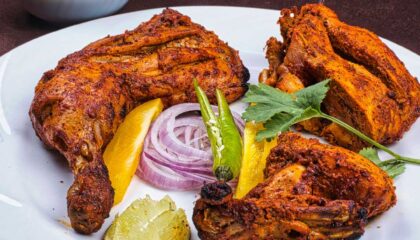 Read more +
December 15, 2022 By Amchur Restaurant in Blogs
Read more +
December 15, 2022 By Amchur Restaurant in Blogs
Indian Food Choices for Special Occasions
-
 Read more +
November 11, 2022 By Amchur Restaurant in Blogs
Read more +
November 11, 2022 By Amchur Restaurant in Blogs
Creating a Positive Dining Experience
-
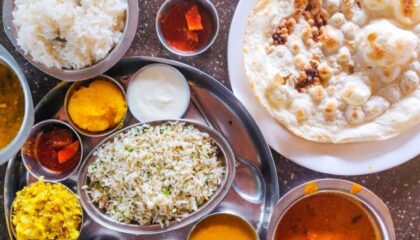 Read more +
October 9, 2022 By Amchur Restaurant in Blogs
Read more +
October 9, 2022 By Amchur Restaurant in Blogs
Health Benefits of an Indian Diet
-
 Read more +
By Amchur Restaurant in Blogs
Read more +
By Amchur Restaurant in Blogs
Seasonal Foods and its Health Benefits
-
 Read more +
September 19, 2022 By Amchur Restaurant in Blogs
Read more +
September 19, 2022 By Amchur Restaurant in Blogs
Perfect Party Venue in Old Windsor : Amchur
-
 Read more +
September 8, 2022 By Amchur Restaurant in Blogs
Read more +
September 8, 2022 By Amchur Restaurant in Blogs
Choosing the Right New Year Party Venue
-
 Read more +
September 5, 2022 By Amchur Restaurant in Blogs
Read more +
September 5, 2022 By Amchur Restaurant in Blogs
Choosing the Right Christmas Party Venue
-
 Read more +
September 1, 2022 By Amchur Restaurant in Blogs
Read more +
September 1, 2022 By Amchur Restaurant in Blogs
Checklist To Maintain Restaurant Hygiene

You must be logged in to post a comment.